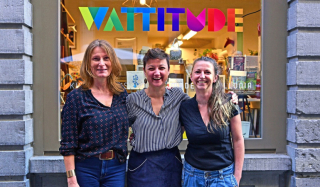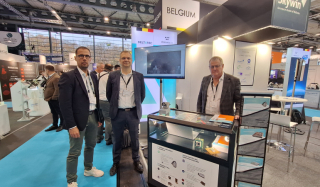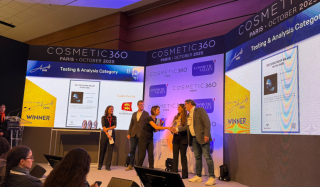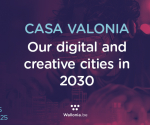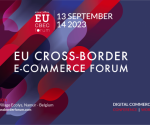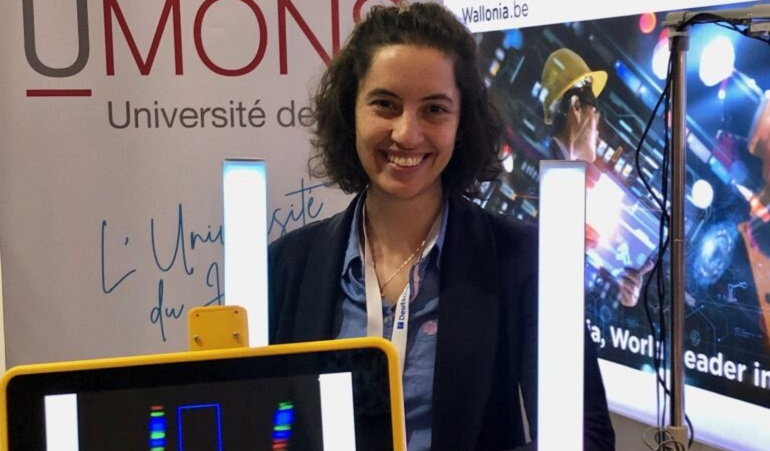
Light that sends information? Yes, it's possible! Find out how!
You have your phone in your hand, in a street where the street lights are on, and a message suddenly appears on your mobile phone screen. A text message? A text sent by an application running on 4G? Not at all!
The message that just arrived was transmitted by light coming from the public lighting. And it was not the phone's antenna that picked it up, but its camera.
Contrary to appearances, this scenario is not fiction. "I have just finished my PhD thesis on the subject of information transmission by light," explains Dr Véronique Georlette. This engineer from Polytech Mons (Department of Electromagnetism and Telecommunications) is about to complete her work in the framework of the Feder Wal-e-Cities project (development of smart cities within an interconnected Walloon territory), in collaboration with the Multitel Research Centre.
Light betrayed by its barcode
Her work focuses on Optical Wireless Communication (OWC), the family of communication techniques that use visible and infrared light spectra to transmit data.
"When LEDs are used to produce white light, it is not exactly white light that is diffused, but rather a fast and specific combination of its three basic colours: red, blue and green," says the researcher.
"This repetition is so fast that our eyes only perceive the result, which is white light. But if we look at this light through an optical sensor, like those in our mobile phones, this white light appears as a combination of light lines formed by the three basic colours of LEDs. Each final white colour shade is composed of a unique sequence of the three basic lights. In reality, a certain light therefore signs a kind of unique light and colour barcode, to which information can be attached."
Why bother sending information by light rather than by the usual "radio" signals? Invited by WBI's Research and Innovation Department to present the results of her work at the Hannover Messe, Germany's major techno-industrial fair, Dr Georlette explains, "As the number and diversity of connected devices increases, there is a risk that some of the radio frequency (RF) spectrum will become saturated. In this context, communication via light is an interesting alternative."
Technology that is now affordable
Transmitting information by light is not in itself new. "But the development of LEDs and their widespread availability at affordable prices means that this technology has evolved significantly in recent years, which makes it interesting," says the École Polytechnique electrical engineer specialising in telecoms and multimedia.
We talk about Li-Fi (Light Fidelity) technology, which uses light, rather than Wi-Fi, which uses radio waves. Another advantage of this wireless technology is the speed at which information is transmitted. "In the infrared range, we can reach one gigabit per second. In white light, transmission speeds of 50 to 60 megabits per second can be achieved. This is enough to comfortably connect to the Internet as long as our computers and smartphones are fitted with photodiodes, which are more efficient at decoding light communications of this type."
Multiple industrial applications to be explored
Véronique Georlette has identified several potential markets for this technology, including industry. "In industrial hangars where Wi-Fi doesn't work, a light antenna is useful for obtaining a high-speed, localised, wireless signal," she says.
"For my thesis, I was interested in several industrial cases, such as the automatic vehicles used in the food industry, and mobile assembly lines where cable communication is still used. Going wireless can improve production."
"There are many other examples where this type of light communication could be beneficial, for example in tunnels to communicate with vehicles, in mines, or in industrial areas sensitive to electromagnetic radiation, such as sites at risk of explosion, etc."
Plans for a giant demonstrator
What's next? "There is talk of developing a large outdoor demonstrator at the Multitel site. It should allow us to conduct tests and present these lighting technologies to the public, as well as study the impact that bad weather can have on their operation. How will this communication system behave when it rains or when it is foggy? There are so many interesting questions to explore, especially for the development of smart cities," concludes the researcher.
This article was written by Christian Du Brulle for the Daily Science platform, with the support of Wallonia-Brussels International and the Wallonia Export-Investment Agency (AWEX).
